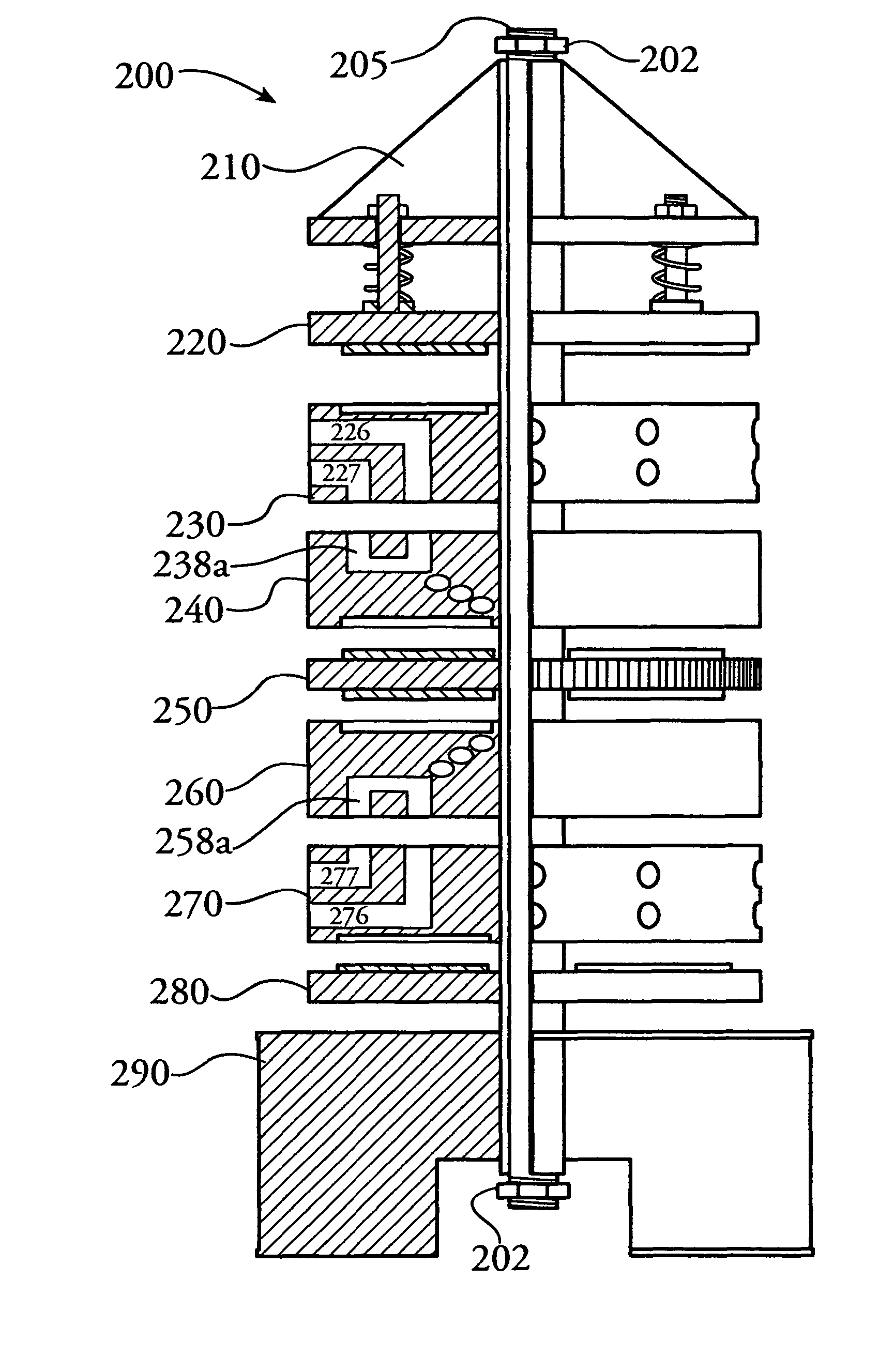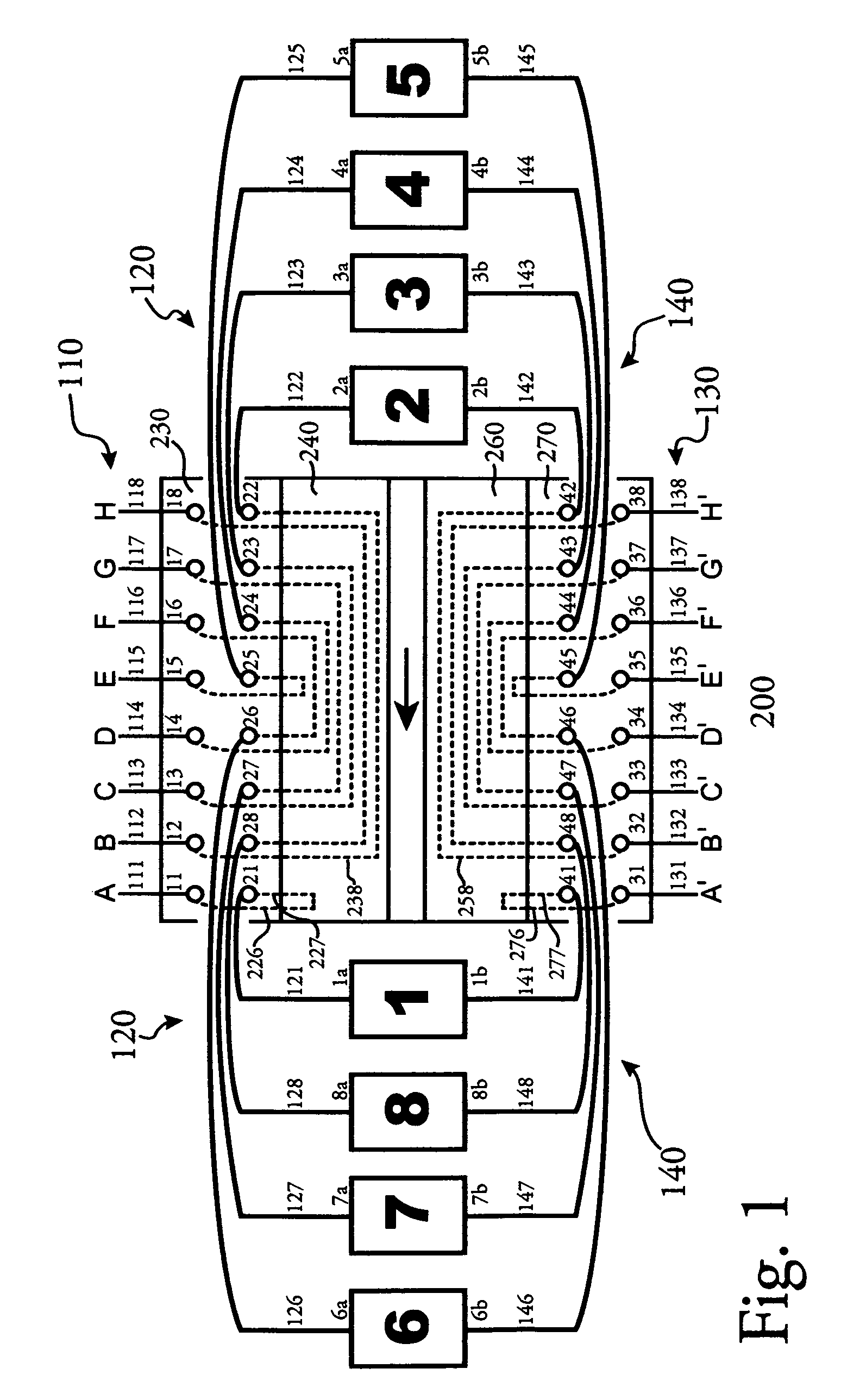Fluid-directing multiport rotary valve
a rotary valve and multi-port technology, applied in the field of valves, can solve the problems of mechanical complexity, large capital expense, and deficiency of each current system, and achieve the effect of simple and accessibl
- Summary
- Abstract
- Description
- Claims
- Application Information
AI Technical Summary
Benefits of technology
Problems solved by technology
Method used
Image
Examples
Embodiment Construction
[0046]Referring to FIG. 1, invention 200 is shown in a schematic with a plurality of fluid contacting chambers 1-8. Chambers 1-8 have a first connection 1a-8a that connect by conduits 120 to multiport valve 200 at ports labeled 21-28. The same chambers 1-8 have a second connection 1b-8b that connect by conduits 140 to multiport valve 200 at ports labeled 41-48. Process streams A-H connect by conduits 110 with multiport valve 200 through ports 11-18 and are in connection with chamber connections 21-28 by internal conduits 226, 238 and 227. Process streams A′-H′ connect by conduits 130 to the same multiport valve 200 through ports 31-38 and are in connection with chamber connections 41-48 by internal conduits 276, 258 and 277. For the sake of clarity, labels 226 and 227 refer to all similar internal conduits on stationary head 230 while labels 276 and 277 refer to all similar internal conduits on stationary head 270. Labels 238 and 258 refer to all internal transverse channels in rota...
PUM
| Property | Measurement | Unit |
|---|---|---|
| radius | aaaaa | aaaaa |
| diameter | aaaaa | aaaaa |
| width | aaaaa | aaaaa |
Abstract
Description
Claims
Application Information
 Login to View More
Login to View More - R&D
- Intellectual Property
- Life Sciences
- Materials
- Tech Scout
- Unparalleled Data Quality
- Higher Quality Content
- 60% Fewer Hallucinations
Browse by: Latest US Patents, China's latest patents, Technical Efficacy Thesaurus, Application Domain, Technology Topic, Popular Technical Reports.
© 2025 PatSnap. All rights reserved.Legal|Privacy policy|Modern Slavery Act Transparency Statement|Sitemap|About US| Contact US: help@patsnap.com



